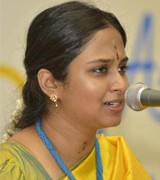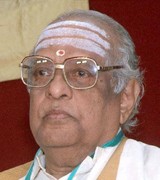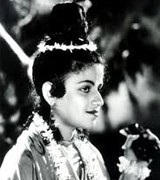COVER STORY
SEASON 2015-16 - Predictable fare
T.T. NARENDRAN

The music season of 2015-16 at Chennai was something special. The city had barely recovered from the “rain-attack” and the deluge that followed, with a trail of several lost houses, besides other, movable assets. There was sufficient ground to generate a debate on whether at all the season should happen on the same dates and on the same scale. Eventually, the upper middle-class mentality won – any disturbance to the status quo is too bothersome, so let us go ahead with it. A few musicians opted out. Some neglected musicians received calls from the sabhas to fill the vacant slots and the season went on, possibly with a slightly reduced turn out of NRIs and “NRMs” (non-resident Madrasis).
The fare on offer was, perhaps, largely predictable. Musicians customised according to the sabhas, implicitly classified as those which needed them to (1) exhibit technical skills, (2) strictly stick to orthodox stuff (3) cater to popular expectations (4) give predominance to the local language (5) mix it all up since nobody has any idea of what will sell. The last category, perhaps, was reason for confusion in the minds of young musicians and for their inhibitions on the concert platform.
SPECIAL FEATURE
P.S. NARAYANASWAMY - A teacher in the grand tradition
V. RAMNARAYAN

Sangita Kala Acharya P.S. Narayanaswamy must be one of the most loved Carnatic music gurus living amongst us today. The recent concert festival in Chennai entitled PSN Parampara that featured 26 of his disciples was a measure not only of the quality of his mentorship but also of the enormous respect and affection he receives from them. A stickler to tradition and an unswerving follower of the Semmangudi bani, PSN has been uncompromising in the values he reiterates over and over again to his students and the public at large at every speaking opportunity. As a votary of open-mouthed, akaram-dominant vocalisation, he belongs to a vanishing breed of teachers, to whom deeply felt and aesthetically presented raga music is more important than briga and swara fireworks. “I don’t know any complex theory. All I know is what I have learnt from my guru and the great masters of the past,” he often says. As a guru, he is always pleasant and encouraging, but a firm believer nevertheless that perfect practice makes perfect.
THE MS CENTURY
The Maharashtra connection
MANOHAR PARNERKAR

For nearly two hundred years (1675-1855), Tanjore, in Tamil Nadu, was the virtual epicentre of Carnatic music. M.S. Subbulakshmi was a glorious inheritor of the Carnatic tradition that had been enriched and enlarged by the Tanjore Maratha dynasty founded by Venkoji aka Ekoji Rajah Bhonsle (1630-84), the stepbrother of the legendary Maratha king Shivaji.
The Tanjore Maratha dynasty was one with a difference for two main reasons. Its rulers’ assimilation into – and identification with – the local Tamil and Telugu (the court language) cultures was so complete that over the years, their link with the land of their Maharashtrian ancestors was no more than totemic. And most of the dynasty’s kings, besides being great patrons of scholarship, learning, fine arts and culture, were also highly regarded music composers or musicologists. Thanks to the contributions of some of the kings and the musicians at their courts, several musical or quasi-musical forms of Maharashtrian origin were added to the Carnatic mainstream repertoire. These were Harikatha kalakshepam (known in Maharashtra simply as Keertan or Harikeertan), bhajans, several operas, and the best-loved among them all – abhang. M.S. Subbulakshmi sang at least three Tukaram abhangs.
TRIBUTE
The essence and grace of Mrinalini Sarabhai
KANNIKS KANNIKESWARAN

"Break a coconut”. “It will relieve the stress.”
These words echo in my mind almost 18 years after I heard them from Mrinalini Sarabhai “Amma” at Darpana in Ahmedabad. There was some problem with a copying machine; and this is how Amma assured the person dealing with the copier that everything would be all right.
Yes, “Everything will be all right” were the reassuring words. For Mrinalini Amma there was no issue hard enough; it would all be resolved. I still think of her words any time I find something stressful.
Amma then was almost 80; just a few years younger than my grandmother. She was from a generation that had been born in the pre-electricity era. She was in the big league along with folks like musician Lakshmi Shankar, a south Indian who had made a name for herself all over India and the world, very strongly grounded in her native art form. She had built institutions and had taken art forms to new dimensions.


